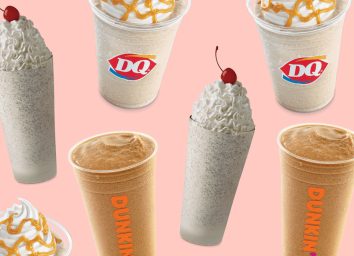5 Secret Pitfalls of This “Healthy” Fast-Food Order
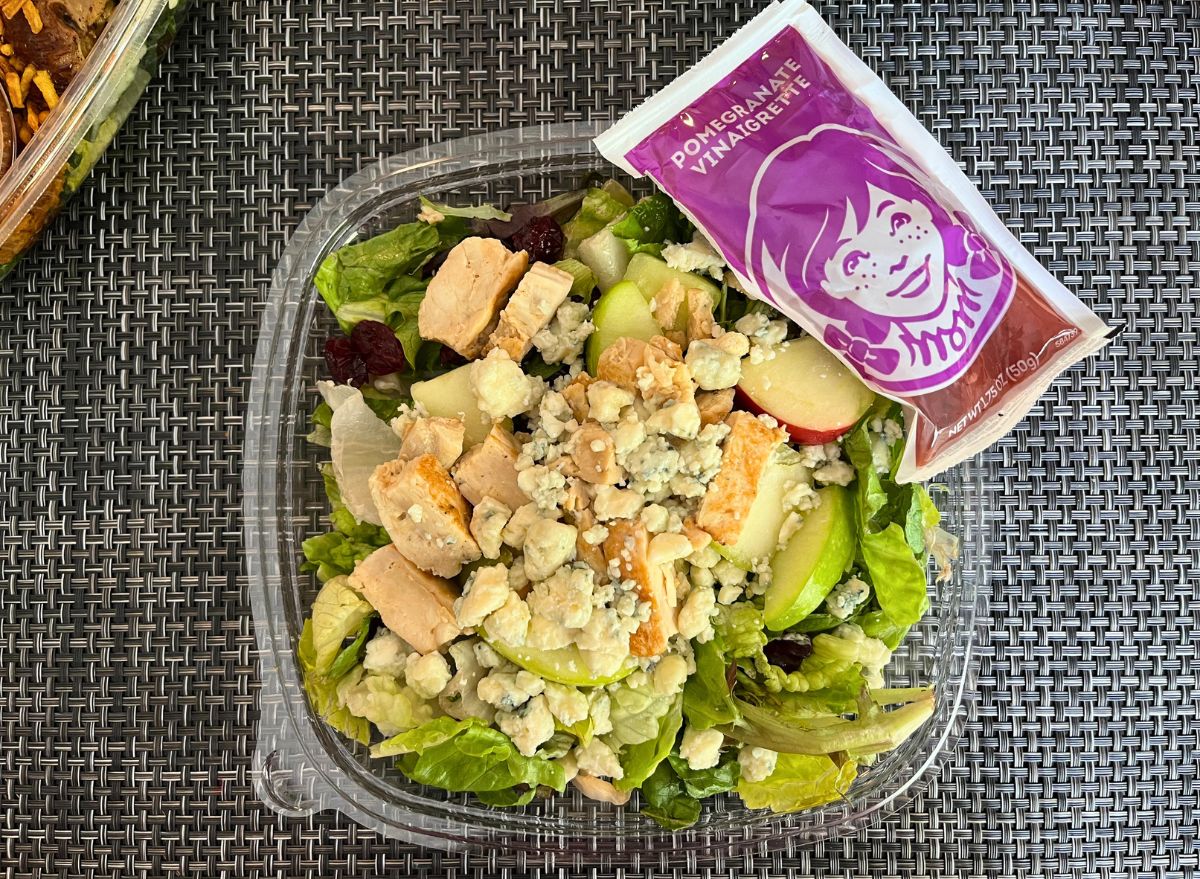
Fast-food salads often feel like the restaurant chains’ attempt at seeming wholesome. And unfortunately, they usually fall into one of the two categories: the afterthought salad, featuring lifeless greens and soggy croutons, or the unhealthy salad, which is rarely more than just a different presentation of the same fast-food ingredients you’d normally get in a burger or a sandwich.
At least when you opt for a burger or a chicken sandwich, you’re being honest about what you’re eating. But a fast-food salad has a way of lulling you into a false sense of healthy eating when you really aren’t.
Amy Goodson, a registered dietitian and certified specialist in sports dietetics, walked us through the landscape of fast-food salads and identified the most common pitfalls—so you can recognize them and avoid them in the future.
For more fast-food news, check out 8 Worst Fast-Food Burgers to Stay Away From Right Now.
The dressing
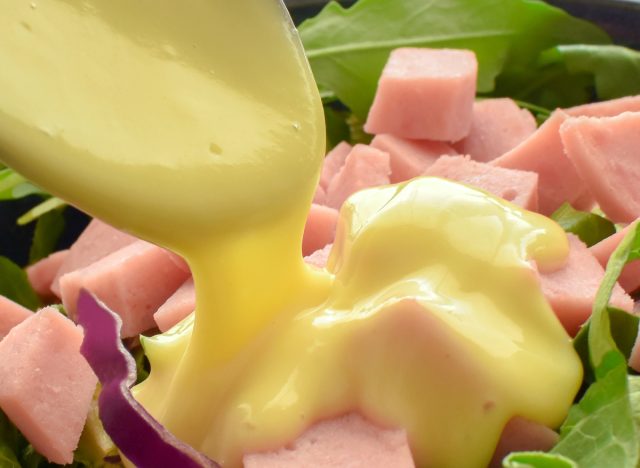
When it comes to fast-food salads, the devil is in the dressing. You’ll want to lather it on as it masks the salad’s other imperfections, like subpar veggies and proteins. And while a bit of dressing is obviously necessary, the type you choose and the amount you choose to consume are crucial.
“The creamy ones can add up the calories real quick,” says Goodson, “especially if you add more than one serving.”
Take Chick-fil-A’s Avocado Lime Dressing, for example. Just one serving will add 310 calories and 530 milligrams of sodium to your salad. Put it on the Chicken Cobb salad with Grilled Nuggets and you now have a salad that is 1,040 calories and 1,980 milligrams of sodium (almost the daily recommended limit of 2,300 milligrams.) For comparison’s sake, the chain’s Grilled Chicken Sandwich has 320 calories and 680 milligrams of sodium.
Another problem? Most people assume that the salad dressing that comes with the salad represents one serving of it, but this isn’t always the case, says Goodson.
Chili’s Citrus Balsamic Vinaigrette, for example, comes in at 330 calories for a 2-ounce drizzle. “Most restaurants easily give you double that amount or more,” she says. “And adding this salad dressing, thinking it’s healthier because it’s a vinaigrette, can quickly take your salad over to the dark side.”
The unhealthy toppings
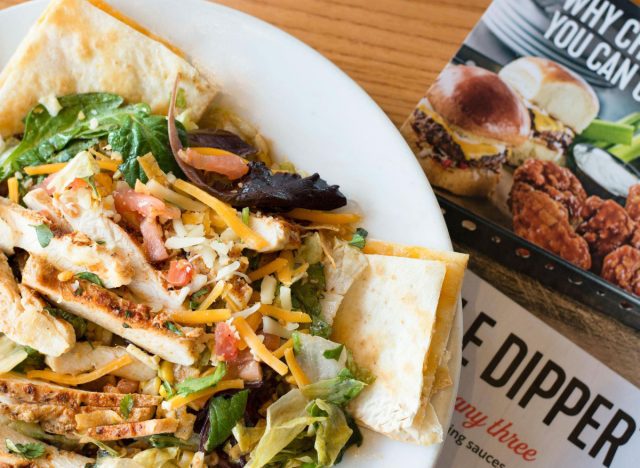
Just because the base of your salad is made of lettuce and veggies doesn’t mean you can add whatever you want on top and call it a healthy meal.
“To amp up the salad’s craveability, restaurants amp up the high-calorie toppings,” says Goodson. “Take a look at Chili’s Quesadilla Explosion Salad, which has a whopping 1,400 calories, 27 grams of saturated fat, and 2,590 milligrams of sodium. The extra calories likely come from the cheese quesadillas, tortilla strips, and the citrus-balsamic dressing.”
Too much of a good thing
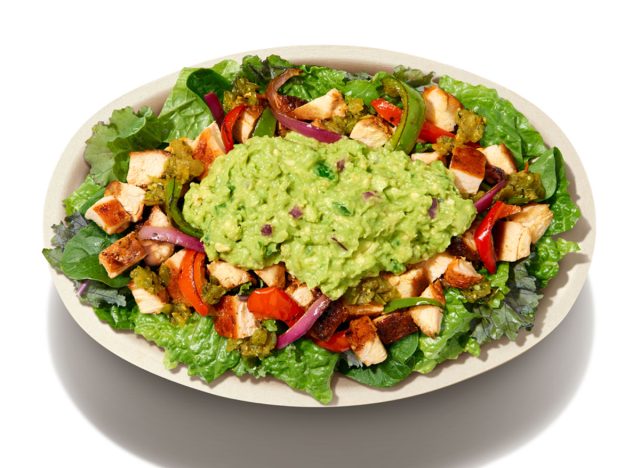
It’s true that things like nuts, dried fruit, and avocado are good-for-you ingredients and nutrient-rich additions to a salad. But Goodson points out there is such a thing as too much of the healthy stuff.
“In many cases, restaurants go overboard and end up putting WAY too many of these ingredients on your salad causing the calorie calculator to skyrocket,” she says. “Chipotle, for one, is a great example of where you can go overboard quickly.”
We don’t deny that Chipotle has fresh, healthful ingredients, but let’s look at the ingredients and do some simple addition. Start with one serving each of lettuce (15 calories) and chicken (180 calories). Then add black beans (130 calories), Monterey Jack Cheese (110 calories), guacamole (230 calories), fajita vegetables (20 calories), roasted chili corn salsa (80 calories), sour cream (110 calories), and a serving of the Chipotle Honey Vinaigrette (220 calories) and voila, you’re now at 1,095 calories.
“It’s just too much for a meal, even though it has healthy ingredients in it,” Goodson warns.
The seemingly wholesome sides
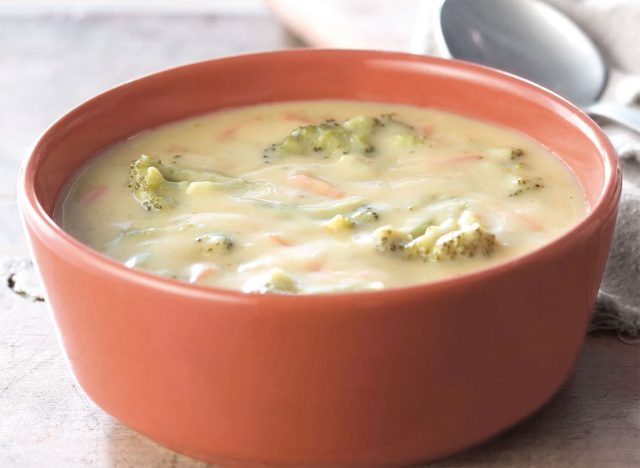
A soup and salad combo sounds pretty wholesome, right? It could be anything but.
“Many people think since they are getting a salad for their meal, there must be room for a side item, but making the wrong addition can send the meal’s nutrition profile over the top,” warns Goodson.
For example, if you’re ordering a soup and salad combo at Panera, picking the Broccoli and Cheddar Side Soup will add 230 calories and 840 milligrams of sodium to your meal. And if you put that one cup of soup in their bread bowl to go with your salad, you just added 900 calories and 2,000 milligrams of sodium to your half salad.
“Adding bread is another way to increase the calories of your salad,” Goodson says. “A small piece of baguette at Panera will add 150 calories and if you stop by Cracker Barrel and enjoy two biscuits with your salad (after all, they bring them to the table), you just added 320 calories for those two little things.”
The “surely I deserve this” bonus treats
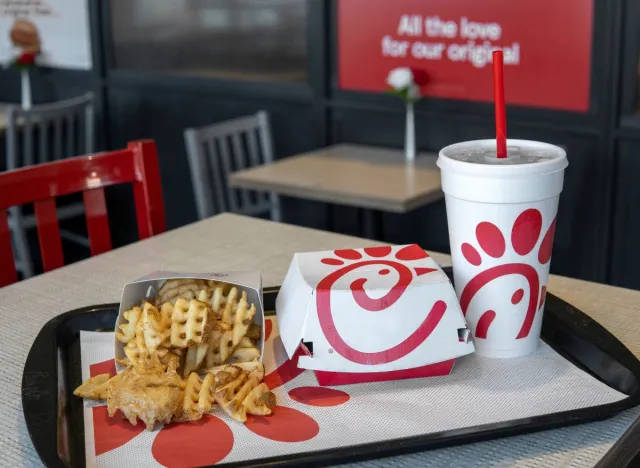
Similarly, opting for a salad as our main dish may cause our treat mentality to kick in. Be it because the salad didn’t satisfy us or because we think we’ve saved room in our calorie count for the day, we’ll often consider adding fries or a dessert to reward ourselves, says Goodson.
While indulging in our cravings from time to time is part of self-care, adding a treat to our salad often brings us back to nutritional square one.
“Chick-fil-A’s small waffle fries will add 320 calories and 19 grams of fat to your salad. Or add a small Wendy’s chocolate frosty (350 calories and 47 grams of sugar) to your Apple Pecan Salad (550 calories) and things just added up real quick,” Goodson says.
How to build a better fast-food salad
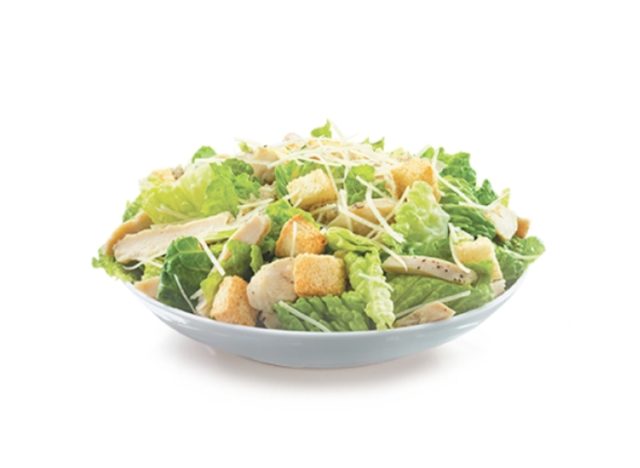
We asked Goodson for tips on how to make sure our fast-food salad order stays nutritious and light. Here are the tips she gave us:
- Don’t pour the dressing over the salad. Instead, set it aside and lightly dip your fork in it. It might sound silly, but the dressing is typically the biggest calorie-add and void of nutritional value.
- Choose grilled meat. Some assume fried chicken is somehow better for you if served on a salad instead of a sandwich, but it will add lots of fat and calories to your meal.
- Make sure your salad has a balance of veggies, protein, healthy fat (avocado or an olive oil-based vinaigrette), and even fresh fruit. Ordering a salad that contains fiber, protein, and healthy fat is likely to help you feel more satisfied and less tempted to go for dessert.
- Go light on the toppings or choose which ones you like best. Things like dried fruit, cheese, and fried toppings can increase the calorie content of your salad quickly.
- Choose a light side item, like a fruit cup.
- Go for one of these 6 Best Fast-Food Salads in America.

